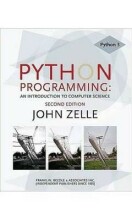Summary: Bio Test #3
- This + 400k other summaries
- A unique study and practice tool
- Never study anything twice again
- Get the grades you hope for
- 100% sure, 100% understanding
Read the summary and the most important questions on Bio Test #3
-
Bio Test #3
This is a preview. There are 82 more flashcards available for chapter 27/03/2017
Show more cards here -
The generation of daughter cells from a parent cell-Cells do this to reproduce organisms and to grow and repair multicellular organisms-Involves the transfer of genetic information from parents to daughter cells
Cell Division -
Combines genetic information from two individuals of opposite mating types to produce offspring
Sexual reproduction -
Occurs in Prokaryotes (Bacteria and Archaea) Function: Asexual reproduction
Binary fission (cell division) -
Occurs in Eukaryotes: single-celled or multicellularFunction: Asexual reproductionOccurs in Eukaryotes: multicellularFunction: Growth of individual; repair and replacement of cells and tissues
Mitotic division (cell division) -
The process that generates two genetically identical daughter cells (clones) from a single parent cell in eukaryotes-Involves the even distribution of replicated DNA (packaged in multiple chromosomes) into new daughter cells-During process, the nucleus divides in a process called MITOSIS, followed by a division of the cytoplasm called CYTOKINESIS-Allows eukaryotes to replace dead cells and add new cells to the body; many single-celled eukaryotes can reproduce asexually through this process; some multicellular eukaryotes as well
Mitotic division -
Allows the daughter cells to become specialized into any of the 220 different cell types found in the human body (truly multicellular)
Cell differentiation -
Small group of gamete-producing cells, that are reserved early in embryonic development for eventually producing gametes for the new individual
Germ line cells -
Unspecialized stem cells that serve to grow, regenerate, and repair tissues through adulthood
Adult stem cells -
Each DNA double helix is packaged with special proteins to form long strands of ______?
Chromatin -
DNA is replicated during S phase, resulting in two identical double helices, known as ______.-These are held together at a region called the centromere-Later, in mitosis, they are split and become chromosomes of the new daughter cells.
Sister chromatids
- Higher grades + faster learning
- Never study anything twice
- 100% sure, 100% understanding
































